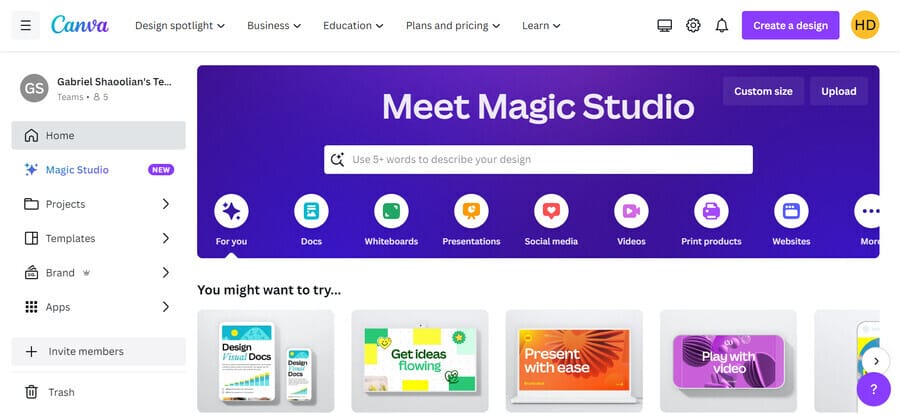The Importance of User Experience in Effective Web Design Strategies
Recognizing Individual Experience: Key Principles for Successful Website Design
In the realm of website design, understanding customer experience (UX) is critical to creating platforms that not only bring in however additionally preserve individuals. Secret principles such as instinctive navigation and efficient comments mechanisms play critical functions in fostering individual fulfillment. Furthermore, factors to consider for access guarantee that all individuals can engage with the material seamlessly. The subtleties of aesthetic style and the importance of repetitive testing often continue to be ignored. As we discover these foundational elements, it becomes apparent that grasping UX is not just an alternative yet a necessity for success. What are the implications of ignoring these principles?
Importance of User Experience

In the realm of internet layout, one can not take too lightly the significance of user experience (UX) as an essential element that directly influences the success of a site. When customers run into a interesting and intuitive interface, they are more most likely to discover the web content, transform right into clients, or share their experiences with others.
It encompasses the overall functionality of an internet site, making certain that navigating is smooth and details is quickly obtainable. Sites that focus on UX are usually regarded as even more credible and credible, which can have a profound impact on conversion prices.
Inevitably, purchasing user experience is not simply a layout selection; it is a strategic decision that can set apart a brand name in a congested marketplace. By focusing on UX, services can develop meaningful interactions that resonate with customers, paving the method for sustained success in the electronic landscape.
Usability Concepts
Efficient website design pivots on the application of key usability principles that ensure a website is both straightforward and useful. Central to these principles is the principle of intuition, where individuals can browse the website effortlessly without considerable guideline. Clear navigating structures, including regular layouts and well-labeled menus, enhance this instinctive experience, allowing individuals to locate details promptly.

Consistency is equally important; maintaining uniformity in design elements, terminology, and procedures throughout the site assists to minimize confusion. Customers should not have to relearn how to connect with different areas of the web site.
Furthermore, error prevention and recuperation are crucial for usability. Web sites should be created to minimize the opportunity of customer mistakes, and when errors take place, clear and constructive error messages need to lead customers in the direction of resolution.
Access Factors To Consider
Guaranteeing availability in website design is extremely important for producing comprehensive electronic experiences that satisfy all users, including those with handicaps. Ease of access factors to consider involve developing sites that suit diverse needs, enabling customers with aesthetic, auditory, cognitive, or motor disabilities to browse and connect properly.
To accomplish this, internet designers need to stick to established guidelines, such as the Internet Material Availability Guidelines (WCAG) These guidelines supply a structure for making material perceivable, operable, understandable, and robust. Key techniques consist of ensuring sufficient color contrast, offering text alternatives for non-text content, and guaranteeing keyboard navigability.
Additionally, semantic HTML ought to be made use of to enhance screen reader compatibility, enabling users with aesthetic problems to understand the structure and definition of content intuitively. web design. Supplying clear, concise directions and making use of simple language can better improve use for individuals with cognitive handicaps
Regular accessibility testing, entailing Visit Website genuine customers with disabilities, is vital to determine obstacles and enhance the individual experience. By prioritizing ease of access, web developers not just abide with lawful requirements however likewise foster a more fair electronic landscape, eventually benefiting everyone via boosted functionality and interaction.
Aesthetic Design Components
A myriad of aesthetic design components plays a vital function in shaping customer understandings and experiences on a website. These elements include color design, typography, whitespace, imagery, and format, each adding to the total visual charm and effectiveness of a website.

Color pattern stimulate emotions and can influence customer activities; as an example, warm shades may create a feeling of seriousness, while amazing colors often advertise calmness. Typography, on the various other hand, impacts readability and can establish a brand name's character - web design. The choice of font design and size must straighten with the site's objectives and target market
Imagery, consisting of symbols and pictures, enhances narration and can considerably influence individual engagement. High-quality visuals produce a sense of professionalism, while poor-quality pictures may diminish the user experience.
Format and whitespace are equally crucial, as they guide individuals through the material. A navigate to these guys well-structured format helps customers find details quickly, while appropriate whitespace prevents clutter, promoting a much more delightful browsing experience.

Checking and Iteration
User screening and model are essential components of a successful internet layout process. Individual screening entails observing how genuine customers interact with a site, determining use issues, and understanding individual habits.
Model, on the various other hand, is the process of refining the style based upon the understandings obtained from user testing. By making incremental modifications and re-evaluating the style, groups can improve capability, boost visual appeals, and enhance individual involvement. This intermittent strategy cultivates a society of continual improvement, allowing designers to adjust to customer needs and arising fads effectively.
Moreover, integrating both user screening and model right into the layout procedure causes even more educated decision-making and eventually leads to a more user-centered product. By embracing these principles, web developers can develop a lot more user-friendly, appealing, and effective experiences that resonate with their target audience, inevitably driving greater customer contentment and retention.
Verdict
Finally, customer experience is an essential part of efficient website design, incorporating use, availability, and aesthetic factors to consider. Complying with recognized principles boosts individual complete satisfaction and involvement, promoting a look at this web-site more comprehensive on the internet environment. Continual testing and iteration act as important procedures for resolving and determining user discomfort points, making certain that web layouts stay adaptable to progressing needs. By focusing on these elements, internet developers can produce user interfaces that not only fulfill user assumptions but additionally promote long-term connections.
In the world of internet style, recognizing user experience (UX) is critical to developing platforms that not only bring in yet also keep customers.In the world of web style, one can not underestimate the importance of customer experience (UX) as a pivotal aspect that straight affects the success of a website. Individual screening involves observing how genuine individuals connect with a website, identifying usability problems, and comprehending customer behavior.In conclusion, user experience is an essential component of effective web design, including functionality, access, and aesthetic considerations. Continuous testing and version serve as important processes for attending to and recognizing user pain points, making certain that internet layouts continue to be adaptable to evolving needs.